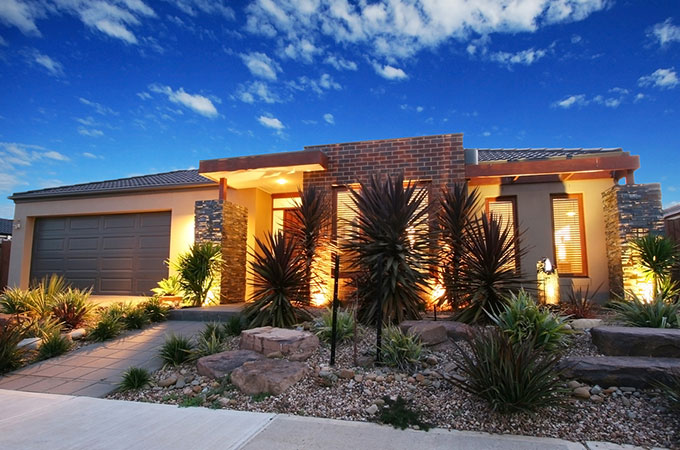
Live-in landlords are common these days, as more and more people choose to lease out rooms in a house they own and live in. It can help pay the mortgage, cover the rising costs of living expenses and fill up space that’s otherwise unused. If you lease out part of your home, you’ll receive rent. This is usually treated as “assessable income” by the ATO.
That’s why it’s important to learn the basics about your rental income tax obligations, come tax time…
What changes at tax time?
When you rent or lease out your room(s), you’ll receive payment in the form of rent from your tenant. The rent money you receive is income and it must be claimed on your tax return. Specifically, claim it at the ‘Rent’ section on your Etax return.
Next, you can claim deductions against this income to boost your refund. Let’s see how to do that best:
As a landlord, you need to keep good records

You’ll want to stay in the ATO’s good books. You also want a decent tax refund and to avoid over-taxation. The absolute number-one habit that makes those things possible is a good, steady habit for keeping receipts and records. It doesn’t have to be hard or complicated! Just keep receipts and a short note about any expenses or costs relating to renting your space – plus record any rent income you receive.
Your records folder will be particularly useful at tax time when you suddenly remember, and can prove, some refund-boosting landlords’ tax deductions.
Remember, no receipts mean no tax deductions, so keep them all. If you’re in doubt about whether a receipt might be claimable, keep it anyway. Your tax agent can advise at tax time whether you can use it to boost your tax refund.
Claim your rental income tax deductions: The Apportion Method
There are lots of tax deductions you can claim as a live-in landlord by using the “apportion method”. Sounds scary? Don’t worry, it’s simple.
The apportion method is a common way of separating tax-deductible expenses between private and personal use. As a general approach to determining this, apportionment should be made on a floor basis (the space in which your tenant takes sole occupancy) with a reasonable figure for access to other general living areas including the garage and outdoor areas. This means you’re including the tenant’s living area, along with an appropriate estimation of other living areas you share together. For someone sharing with one other person this would typically be 50% of the shared spaces.
If the tenant is also paying for part of your running costs (electricity, internet, heating etc.) as either a fixed weekly/monthly amount or as a percentage of the bills, you’ll need to treat this the same as rental income. Ensure you claim both the income and the deduction for these expenses.
One live-in landlord’s taxes: An example
Claire owns a two-bedroom unit. She rents out one bedroom for $150 per week to a student, year-round. The floor area of the rented bedroom is ten square metres – and that’s twenty per cent of the total floor area of Claire’s unit.
Claire’s expenses include building insurance, rates and taxes, totalling $10,000 for the year.
What should Claire enter on her tax return?
- Income: Claire should enter $7,800 rental income under item 21 in the income section of her tax return. ($150 rent x 52 weeks)
- Deductions: Claire should enter $2000 (20% of her $10,000 expenses) as tax deductible expenses. She should send copies of the receipts to her tax agent; that’ll help them ensure it is all claimed correctly and if the ATO has problems, the tax agent will help sort it out.
What kind of tax deductions can live-in landlords claim?
When it comes to claiming deductions, remember to keep all of your receipts. Set aside the time to work out what percentage of your expenses are claimable throughout the year, so when tax time comes around, it’ll be easy to lodge.
Some common deductions include:
- Internet and phone costs
- Water, power and council rates
- Upkeep and repairs
- Depreciation on the cost of furnishings and equipment
- Interest on your mortgage
- Body corporate fees (when applicable)
What if I’m renting out a room to family or friends?
Renting to friends or family at a discounted or less than market rate might seem like the right thing to do sometimes. However, from the ATO’s perspective, that may limit the deductions you can claim.
When you claim property-related tax deductions, the ATO assumes you should be making the most of your property’s investment potential. If you intentionally receive less than market rent, the ATO requires that your expenses are adjusted downward by the same proportion that your rent sits below market rates.
For example, if you rent a room to a cousin at half of the market rent, you must divide your deduction claims in half as well.
Or, if you rent a room to your mate for 25 per cent less than the market rent, then all your rental-related deductions need to be adjusted down by 25 per cent as well.
How do I find the market rate for renting a room?
Pretty easy, really. First, look on realestate.com.au. Check out comparable properties in your area and be fair and honest with yourself about it. (Remember, the ATO can look it up just as easily, and compare to your house. The internet keeps you honest, so be honest and avoid some trouble! Another approach is to ask your real estate to recommend your market rent in a short letter. Provide that to your tax agent and you should be set for whatever the ATO throws at you about market rents.
Working out your live-in landlord tax deductions when renting to family or friends can be tricky. Make sure you ask your tax agent (like Etax) for help if you’re not sure. It’s always better to get this section right in the first place, rather than face ATO troubles down the track.
Am I liable for capital gains tax?
When you sell the house that was your own main residence, you are not usually liable for capital gains tax (CGT). But as soon as you start renting space, it can get a bit more complicated.
Unfortunately, if you decide to earn some income by renting out a room or two, you’re no longer entitled to the full “main residence exemption.” This means when you sell the house, you’ll need to pay some CGT at a rate that’s adjusted based on how much of your house was rented and for how long.
To calculate how much CGT you’re on the hook for, you must consider:
- The area of the total floor area that is set aside to produce income (i.e 10%)
- The duration in which you’ve used this floor area (days per year)
You’ll then be able to work out the total days your property was rented out of the total days you owned your property.
For example:
Claire’s rental space is twenty per cent of her home. She owned the property for five years and rented out the room for four years total (1,460 days out of the 1,825 she owned it).
When she sells after five yours, she will be liable to pay twenty per cent of the full CGT for the property – only for the 1,460 days she rented the property.
Please note: this only applies to properties that have been rented after 20 August 1996.
Before you rent out a room, weigh all the costs and benefits
Becoming a live-in landlord can offset some of your household costs with rent income while creating tax deductions for some of your expenses. But as we outlined above, there are down-sides including the future cost of CGT. Go into it “with eyes open” and decide what’s best for you in the long run. Be particularly careful about renting a room to a friend on the cheap; this has all the tax costs, but fewer tax benefits for you.
If you’re still unsure about any aspect of your live-in landlord tax obligations, be sure to get in touch with us on [email protected] or Live Chat with one of our accountants, as we can help answer any tricky questions.




